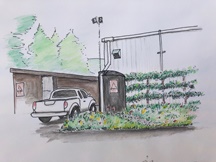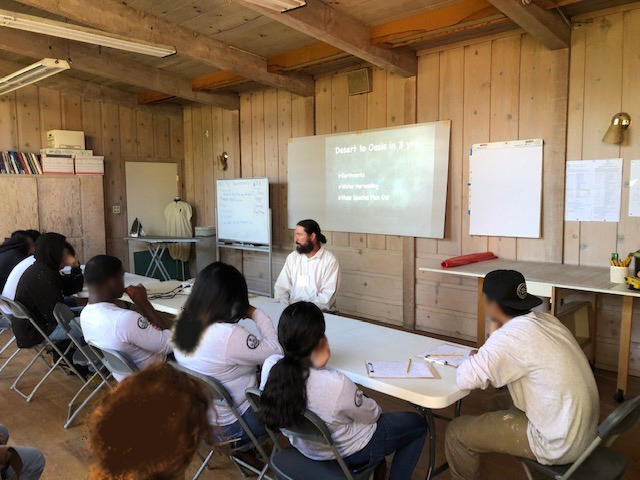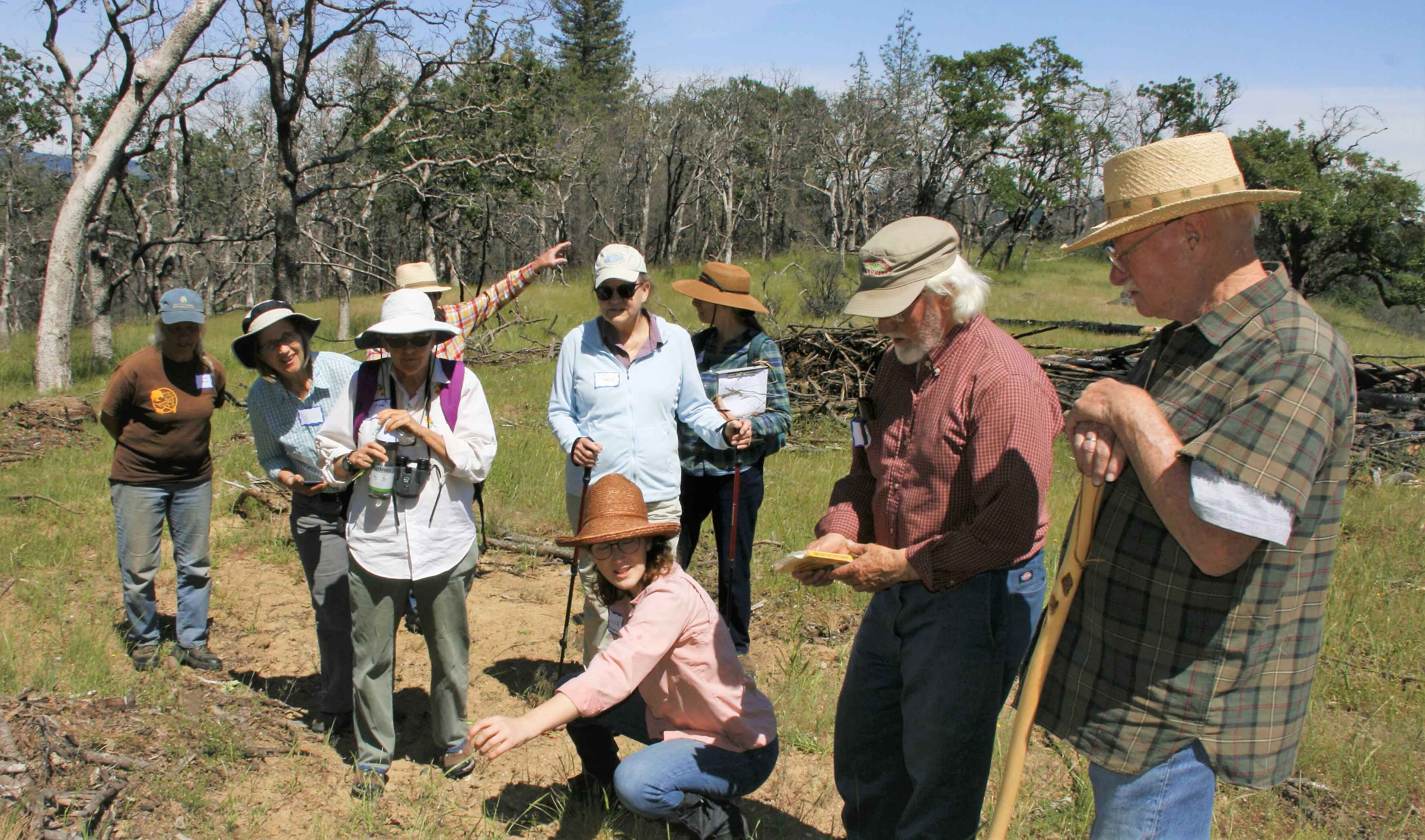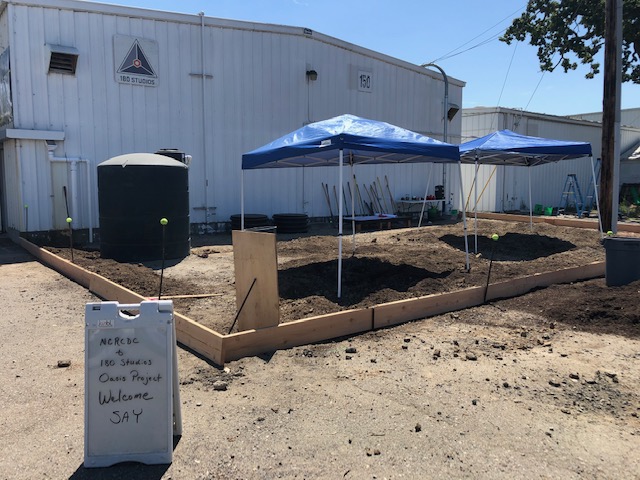
The NCRC&DC is partnering with other organizations to provide educational outreach throughout our rural communities to assist in assessing community needs for fire resiliency and to inform residents of actions they can personally take to reduce their risks from wildfires. We are helping spread the word on individual actions that can be taken to be more fire safe such as understanding defensible space measures, fire hardening techniques, benefits of fire-safe landscaping, developing a fire action plan including a family evacuation plan, and available resources to assist in community-wide planning.
One partner for a specific project in this effort is Gold Ridge Resource Conservation District (GRRCD) who we are working with to implement a Fire Prevention Planning and Community Engagement Project in Camp Meeker. This project is funded by CalFire and we will work GRRCD as it reaches out to residents in the Camp Meeker area to create a Community Wildfire Protection Plan (CWPP) and facilitate activities that will educate residents on fire safety and resiliency best practices. GRRCD will hold a series of community planning meetings will provide education around fire science and safety, increase coordination with local fire protection authorities and other relevant agencies, identify areas of high risk in the community and prioritize projects for future implementation. Please vist the GRRCD website for more specific information on this project.

TURKEY TAIL MUSHROOMS AND GROWTH OF TANOAK
The project is to evaluate an alternative method for brush control in our forests using native turkey tail mushrooms. Controlling forest re-sprouting of brushy tanoaks after logging is frequently a standard practice as part of reforestation to comply with the California Forest Practice Rules and reduce the fire hazard of heavy brushlands. The traditional approach has generally been some combination of herbicidal treatments to control hardwood species, but concerns have been raised about leaving dead brushy species which could serve as more flammable understory vegetation; changing management practices are considering alternatives to this traditional approach.
This project, Tanoak Growth Treated With Native Turkey Tail Mushrooms, will evaluate any sprouting inhibition effect from these native saprophytic fungi (Trametes versicolor) on treated tanoak stumps. Additional observations include the enhancement of stump degradation by the mushroom as it develops and grows on the tanoak tree. In addition, the NCRC&DC will learn whether innoculated tanoaks can serve as a growth media for Turkey Tail which may have some economic value as a medicinal mushroom in our local forests. For additional information on the Turkey Tail mushroom, click here.
The NCRC&DC received a grant in 2019 from the Community Foundation of Mendocino County from their special Field of Interest grant program for the Charles F. Flinn and Walker B. Tilley Fund for Sustainable Forestry. Additional funding for this 2-year project has been received from the George & Ruth Bradford Foundation. Additional support will be needed to carry this project through two additional years, and the NCRC&DC is continuing to fundraise for the needed support. Contact This email address is being protected from spambots. You need JavaScript enabled to view it. if you are interested in participating.

"Oasis"
Three-Way Conservation Project
Melding Bee Patches, Rain Catchers, & Worm Wizards
Our conservationist Team developed a conceptual design for changing a bare, compacted soil landscape at our office headquarters (where we rent space from the 180 Studios makerspace) into a demonstration pollinator habitat, water conservation, and waste composting project. The 180 Studios Project enlisted the help of Social Advocates for Youth who brought students from Elsie Allen High School to the site in the summer of 2019 to begin the multi-faced construction project. Our "Oasis" project was an opprtunity to provide environmental education and action and demonstrate how everyone can make a remarkable difference with just a little thought and effort.
First, the SAY participants received health-and-safety instructions as they would be handling construction tools throughout the project, and Santa Rosa was also passing through a warm spell and keeping hydrated was important. The students also received classroom time in the steps involved in this three-pronged conservation project. Led by our  Conservationist Stefan Stehling, the youth received STEM (science, technology, engineering and mathematics) training both in the classroom and on-the-job. They helped design and construct a bountiful habitat garden to be drip irrigated by a rooftop rainwater collection and storage system as they learned principles of ecology and conservation, and turned a bare landscape adjacent to a parking area into a beautiful, sustainable pollinator habitat which will be irrigated with water collected over the winter, and nourished by composted wastes.
Conservationist Stefan Stehling, the youth received STEM (science, technology, engineering and mathematics) training both in the classroom and on-the-job. They helped design and construct a bountiful habitat garden to be drip irrigated by a rooftop rainwater collection and storage system as they learned principles of ecology and conservation, and turned a bare landscape adjacent to a parking area into a beautiful, sustainable pollinator habitat which will be irrigated with water collected over the winter, and nourished by composted wastes.
Oona Heacock and the rest of her team taught the youth about the four basic needs for a pollinator habitat – year-round forage, water, nesting areas, and safety from pesticides – and how to develop those needs into a perennial garden requiring little maintenance. The plants selected for use in the garden were chosen for their suitability for the site, ability to create a green zone, and utility as pollinator habitat.
The youth also learned how to calculate the roof runoff volume from rain, needed tank size for collecting the winter runoff, how to divert excess water into a designed conveyance, and how to set up a drip system for summer irrigation of the patch. Our "Oasis Project" taught the students installation techniques and best practices suitable for small scale landscaping needs.
Our worm composting systems are easily constructed, and the youth learned how to make the bin materials, assemble the bins, add media to support the red worms which over time will break down food scraps and similar wastes, and allow us to retrieve the rich compost formed by the worms. The project involved cutting large sections of plastic drain pipe to make the bin, assembling a wooden platform on which the bins were placed, and lastly sewing insect-exclusion nets to keep unwanted flies and other insects from entering the bins. The picture at below left is of a standard bin.


The Willits Watershed project is located in Mendocino County in the Davis Creek Watershed, which is part of the Eel River basin (see map). In 2017, portions of the Willits Watershed were catastrophically burned in the Mendocino Complex fires. The NCRC&DC Conservation Team has received funding from the Goodman Family Foundation, the Strong Foundation for Environnmental Values, the George & Ruth Bradford Foundation, and others to fund restoration work in the oak woodland areas of the watershed. The target areas for the NCRC&DC restoration work is the upland and riparian areas in the Davis Creek watershed that serves as the water supply for the City of Willits.
We are working to rehabilitate the burned riparian and oak woodland areas with native plants suitable to the specific ecosystem. The project now underway encourages use of volunteers from residents in the Willits area in the replanting work to create greater linkage of the watershed to its people. In addition, multi-generational family participation again targeting local youth in the project will be fundamental. One goal of the project is ecological habitat restoration, and another goal is to create ongoing environmental protection support for a sensitive watershed with drinking water reservoirs. An additional goal is to participate in the healing of a community struggling to recover from the recent fires by strengthening the connection to place through taking action to help a damaged watershed.
We are currently seeking community volunteers to help us form a Plant Protection Squad to assist in protecting seedlings and new plantings from the native herbivores (mostly deer) in the area. Please see the Plant Protection Squad flyer for more information, and contact us at:
:Alina Nuebel, conservationist
NCRC&DC
(707) This email address is being protected from spambots. You need JavaScript enabled to view it.
This email address is being protected from spambots. You need JavaScript enabled to view it.

We are supporting and participating in educational outreach and action throughout rural communities in the North Coast to assess community-identified needs for fire resiliency and inform residents of actions they can personally take to reduce their risks from wildfires. Each community needs comprehensive tools for understanding defensible space measures, fire hardening techniques, benefits of fire-safe landscaping, developing a fire action plan including a family evacuation plan, and available resources to assist in community-wide planning.
Areas burned by wildfires are priority locations for us to implement habitat plantings and stabilization activities, particularly in riparian and oak woodland settings.


